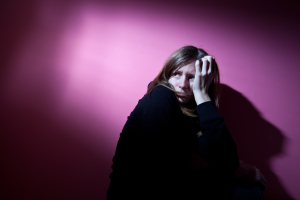Introduction
Mood disorders are mental illnesses where the mood is affected. Several categories belong here like bipolar disorder, cyclothymic disorder , depression ,dysthymic disorder , postpartum depression and substance induced mood disorder.
In many cases it may be that serotonin production is low, which is responsible for a normal mood. Melatonin is a precursor to serotonin and a chronic lack of sleep can lead to lower melatonin production in the pineal gland, so a lack of melatonin may well contribute to the development of mood disorders. In addition with older age (above the age of 40) melatonin production ceases almost completely, which may explain why depression is more common in older people.
A lack of exercise and improper diet with a lack of omega-3 fatty acid as well as a lack of sunshine in the winter months in the northern hemisphere reducing the vitamin D3 production in the skin can also contribute to mood disorders.
In this context home remedies like the use of a light box in the winter months, melatonin 3 mg at bedtime for melatonin and sleep restoration, vitamin D3 at higher doses (like 4000 IU to 5000 IU per day) and omega-3 fatty acid supplements daily makes sense. This along with regular physical exercise will not only prevent mood disorders to a large extent, but will also stimulate the immune system and prevent cardiovascular disease.
References
1. Dr. David Burns: “Feeling good –The new mood therapy”, Avon Books, New York,1992.
2. Diagnostic and Statistical Manual of Mental Disorders, Fourth Edition, (DSM-IV),American Psychiatric Association, Washington,DC,1994.
3. Dr. Shaila Misri at the 46th St. Paul’s Hosp. Cont. Educ. Conference, November 2000, Vancouver/B.C./ Canada.
4. JM Loftis et al. J Neurochem 2000 Nov 75(5): 2040-2050.
5. B. Zilbergeld et al. “Hypnosis – Questions& Answers”, W.W. Norton & Co, New York,1986: 307-312.
6. MH Erickson & EL Rossi:”Hypnotherapy, an exploratory casebook”, Irvington Publishers Inc., New York, 1979: chapter 8, 314-363.
7. G Steketee et al. Compr Psychiatry 2001 Jan 42(1): 76-86.
8. DS Mennin et al. J Anxiety Disord 2000 July-Aug 14(4): 325- 343.
9. J Hartland: “Medical &Dental Hypnosis and its Clinical Applications”, 2nd edition, Bailliere Tindall,London,1982, page: 326-336.







